
Scary Costumes. Safe Drivers.
October 30, 2014
Halloween is scary for many reasons. There are ghouls, ghosts and goblins running amok. There are haunted houses and frightening decorations. There is madness and mayhem. There is witchcraft. There are clowns.
However, one thing that shouldn’t be scary this Halloween is your driving. Of all the days to practice safe driving, Halloween may be the most important. The streets will be filled with kids trick or treating in the evening, followed by parades of party-goers enjoying a costumed night of wicked revelry.
Let your friends and neighbors enjoy the Halloween festivities by practicing safe driving this weekend. The more safe drivers on the road, and the fewer dangerous and/or intoxicated drivers, the more fun everyone will have.
Here are some tips for safe drivers to follow this Halloween:
- Drive slow. Kids will be spontaneously jetting out into the street all over town.
- Watch for children running out into the road from between parked cars.
- Expect pedestrians on the road, in the medians and on the curbs and sidewalks.
- Enter and exit driveways with extreme caution.
- Keep an eye out for the dark clothing that makes up most Halloween costumes, especially after the sun goes down.
- Avoid all distractions – especially cell phone use.
- Don’t get too distracted by outlandish costumes and decorations. If it’s that interesting, pull over to marvel.
Now put on your freaky costumes, #drivesafe and have fun!
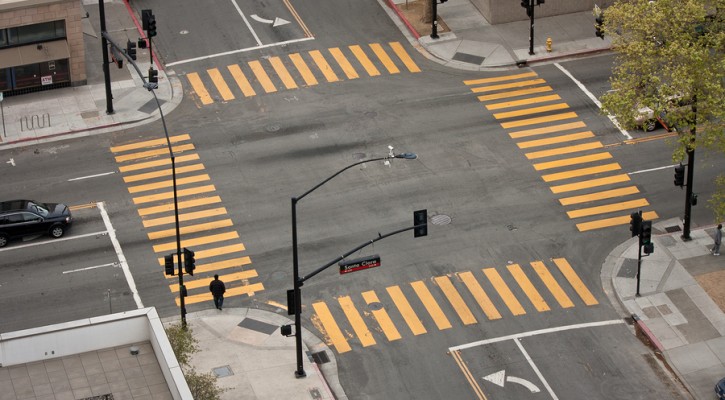
Dangers of the Intersection
October 15, 2014
It turns out, the most dangerous place to drive is closer to home than you might think. Rather than winding cliff-faced roads or high-speed highways, more collisions and deaths occur each year at this little-known, under-appreciated location: the common intersection.
In fact, more than 2 million collisions will occur at intersections this year. That’s close to 40% of all traffic accidents in the U.S., which is a substantial slice of the car crash pie.
The Deadliest Place in Town?
Intersections are a deadly place to be. More than 6,500 people die in intersection collisions annually, killing drivers, passengers, cyclists and pedestrians all across the country. Whether it’s an urban stoplight or a 4-way stop in the suburbs, the intersection is no place to let your guard down. Every single intersection can be considered the deadliest place in town.
Why? Why are intersections such a hazard? The National Safety Council attributes the majority of collisions to the following circumstances:
- Failing to scan intersections properly on approach
- Following other vehicles too closely
- Signaling improperly
- Misjudging the speed and distance of other vehicles
- Turning improperly
- Driving aggressively, including speeding and running red lights
What You Can Do
Although many drivers will fail to practice safe driving as they pass through intersections, those that read this drivers blog will be able to affect some change.
First of all, you can drive in an attentive, defensive mode. In other words, drive as if everyone else is out to get you! Expect other drivers to speed up through yellow lights, run red lights, tailgate, switch lanes erratically, etc. Stay alert and don’t get caught off guard.
You can also teach your friends and family to do the same. By driving smart, you are already being a good influence. You are teaching by doing. You can also point out the dangers of those who speed, tailgate, fail to signal and make other common mistakes. Or, discuss what to watch out for and the best way to deal with each situation.
It’s a dangerous world out there, especially for new drivers. So stay alert and drive safe no matter where you are, and take extra caution when approaching an intersection.

Driver’s Guide to Wet Roads
September 23, 2014
Fall is sure to bring plenty of rainy weather this year, which means lots of driving on wet roads. Oil, engine fluids and water combine to make streets extra slick. When rain is especially heavy, standing water can cause hydroplaning. Before things get too wild out there, read these smart driving tips and you’ll be able to handle the wet roads like a pro.
Love Your Tires
You can improve traction in wet weather by maintaining good tires. Make sure the tread depth is at least 2/32-inch. You can test depth using a tread depth gauge or using the penny test. Then, use a tire gauge to test for proper inflation. While you’re at it, be sure to check for any wear & tear that could result in a leak or blowout.
Use Your Lights
Be sure to use headlights while driving in rainy weather. This will allow you to see and be seen better.
Improve Visibility
There are a few things you can do to improve your visibility. Maintaining windshield wiper fluid will allow you to quickly clear your view when those first few rain drops combine with dirt and dust to create a cloudy windshield. You can also use a rain repellent product on windows and mirrors to help water run off clean and clear. Also, don’t forget to clean the inside of your windows.
Drive Slower
Driving slower also improves visibility, as well as reduces your risk of losing control and hydroplaning. It’s also wise to leave more room when following other vehicles in traffic. Other cars and trucks spray water from the road, which could further reduce your visibility in the rain. Plus, slick asphalt makes it take longer to stop.
Know How To Regain Control
If your car starts to skid, don’t panic! Continue to look and steer the car in the direction you want to go and avoid slamming on the brakes to maintain control of the vehicle.
Know When to Pull Over
If the downpour or spray from other vehicles is too heavy, just stop driving. When visibility is so low that you can’t see the edges of the road or the vehicles in front of you, pull off the road as far as possible, turn on your hazard lights and wait out the storm.
Thousands of crashes occur each year due to rainy conditions. However, all this can be prevented with just little bit of know-how and smart, quick thinking. Keep these tips in mind the next time you drive on wet roads, and you’ll be prepared for anything.
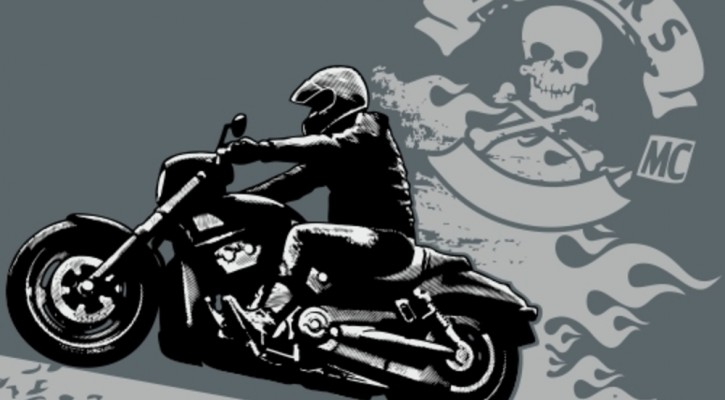
A Message From Motorcyclists
September 9, 2014
Dear Motorists,
The riding season is waning, and fewer motorcyclists are out on the road these days. Extreme August heat will soon give way to freezing winter temperatures. But, don’t let our dwindling numbers fool you. WE ARE STILL OUT THERE.
Fall weather makes for prime riding time in many parts of the country. Meanwhile, some bikers in harsher environments will brave the elements no matter what the seasonal weather brings. So remember to stay alert and keep these motorcycle awareness tips in mind, even as the riding season comes to a close:
- Allow the motorcycle the full width of a lane at all times.
- Always signal when changing lanes or merging with traffic.
- Check all mirrors and blind spots for motorcycles before changing lanes or merging with traffic, especially at intersections.
- Always allow more following distance – three to four seconds – when behind a motorcycle. This gives us more time to maneuver or stop in an emergency.
- Motorcycle signals are often non-canceling and could have been forgotten. Always ensure that the motorcycle is turning before proceeding.
- Put the cell phone away, and never drive distracted!
We will do our best to ride safely, but you can make our lives easier (and longer) by keeping an eye out for motorcyclists all year long.
Sincerely,
Your friendly neighborhood motorcycle rider.

5 Tips For Smooth Labor Day Travel
August 29, 2014
School is back in session, and the weather is starting to turn, but this glorious Labor Day weekend allows many to get in one last road trip before the season’s end.
While one last road trip may sound like a great idea, your travel plans can quickly turn sour if you get caught in gridlock. With an improving economy and gorgeous weather, the traffic forecast isn’t looking pretty. In fact, AAA is predicting 35 million people will trek more than 50 miles from home during the Labor Day holiday, mostly on our nation’s roads.
So before you hit the road, read up on these fool-proof travel tips for smooth Labor Day travels:
1. Take the scenic route.
Look for scenic country routes and local roads that run parallel to highways and interstates. Although it may look like a longer drive on the map, you’ll save plenty of time by avoiding heavy traffic. Plus, you’ll have a much more scenic, easy-going and enjoyable trip away from all the frantic insanity of risky highway drivers.
2. Know your route BEFORE you leave.
Holiday travel is much easier when you know where you are going. Rather than relying on GPS and mobile phone apps to tell you the way, look at a good old-fashioned map and plan your journey. When driving through new territory, it’s common for electronic devices to fail, especially when cell phone service is spotty. Avoid the frustration and distraction all together by planning the drive carefully and paying attention to where you are.
3. Get your music ready.
Fill up your MP3 player, organize your CD’s, and program your radio stations before you leave. Fiddling with the radio can become a major distraction, so have your music ready to go before you hit the road.
4. Do a safety check.
When is the last time your changed your oil? If it’s been around 6 months, then it may be time for a change. Also, be sure to check your lights and turn signals, making sure that all the bulbs are in good working order. And, last but not least, make sure your tires are in good condition. Check for tread ware and use a tire gauge to ensure they are properly inflated. Properly inflated tires will save you money at the gas tank, and improperly inflated tires can drain your gas mileage, or worse, cause tire damage or a blowout.
5. Pack the snacks.
Bring drinks and snacks for the road to avoid unnecessary stops. Save your time and money for the destination, or at least for a meal at a good local restaurant, rather than wasting cash on gas station junk and fast food.
And remember, as always, to #DriveSafe!
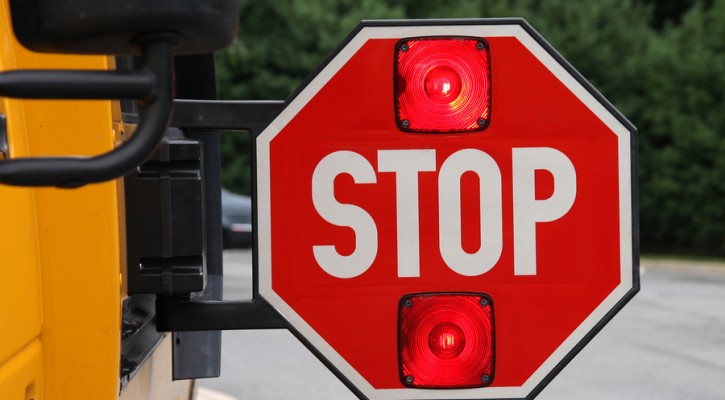
Back-To-School Traffic Tips
August 27, 2014
It’s that time of year again. It’s time for students to say goodbye to summer fun and head back to school. That means drivers should be on high alert to avoid collisions and fatalities related the back-to-school season.
These back-to-school traffic tips will prepare you for another school year behind the wheel:
1. Watch for increased pedestrian traffic.
This is especially true in the early hours before school starts, as well as in the afternoon when school lets out. According to the National Highway Traffic Safety Administration (NHTSA), more school-age pedestrians have been killed between the hours of 3 p.m. and 4 p.m. than any other time of day. So, drive slowly around school zones and bus stops. Also, keep a look out for kids walking to and from school, as well as neighborhood kids hanging out in the after-school hours.
2. Mind school zone speed limits.
Speeding in a school zone will get you a traffic ticket real fast. However, it could also result in something much, much worse: a fatal accident. So be sure to slow down in school zones and drive carefully. Also, avoid distractions such as cell phones and mobile devices.
3. Know the school bus signals.
Flashing yellow lights mean that the school bus is preparing to stop to load or unload children. That means that you should slow down and prepare to stop as well.
Flashing red lights and an extended stop sign at the front of the bus mean that you should bring your car to a stop, no matter which direction in traffic you are driving. As you approach the school bus, come to a complete stop. Do not attempt to continue driving until the stop sign retracts and the red lights stop flashing.
4. Beware of after-school activities.
Football practice, band practice, cheerleader practice and other after-school activities are already underway, meaning that drivers should be cautious well after school hours are over. There will also be games and scrimmages that attract large crowds this fall season, so be prepared for some school-spirited traffic.
Whether you live in the big city or a small cow town, these back-to-school driving tips will help you become a better driver and keep the streets safe for the school season.
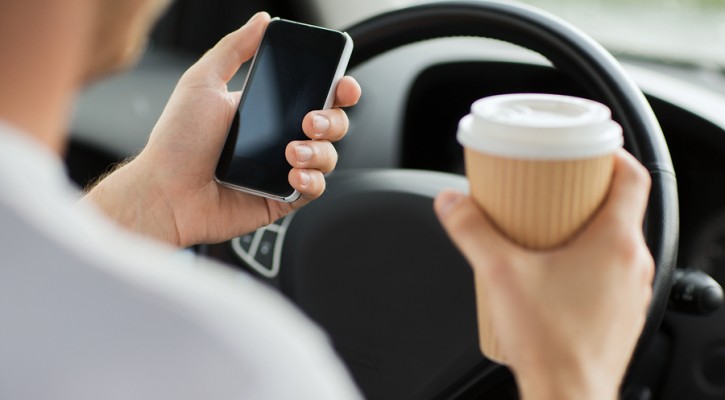
Parents Justify Texting While Driving and DUI
August 26, 2014
We understand that being a parent is hard work. Parents can be forgiven for occasional mistakes – such as that time they dropped you on your head as an infant. However, a recent survey conducted by Liberty Mutual reveals that parents are teaching their teens some terrible driving habits, such as texting while driving and driving under the influence.
Here are the surprising results:
- 88% of teens said their parents used a mobile device while at the wheel
- 58% said their parents texted while driving
- 42% said they have asked parents to stop text-messaging while operating a vehicle
- 18% said they have tried to get them to stop driving while high on weed
- 16% said the adults drove with kids in the car after having at least one alcoholic beverage
- 40% of teens who asked their parents to stop risky driving behaviors said their parents either ignore them or justify their actions!
Teens get the #DriveSafe message. They are constantly told not to drink and drive, text and drive, talk and drive, drive distracted, or drive while high. They are barraged with a million messages at school, at driver’s ed, on social media and at home. They are targeted by PR campaigns that create TV commercials, radio commercials, online ads, billboards, publicity stunts and teen-oriented events. However, when they see their own parents ignoring these messages or justifying their own risky behaviors, what are teen drivers expected to think?
Parents are the greatest influence on their children’s driving habits. Whether they know it or not, kids pick up their driving behaviors from mom and dad at a very young age. They notice when they drive with one hand, turn without blinkers, tailgate, speed and run through stop signs. Teenagers whose parents drive recklessly are more likely to be bad drivers themselves. That’s why it’s a shame to see that so many parents are driving distracted, and that any parents are driving while under the influence.
To all you teen drivers out there: forgive your parents… but, keep bugging them about driving safely. Offer to drive after they’ve had a beer. Tell them to pull over and let you drive if that phone call or text message is important. Surprise your folks by being the smart and sober one, and let them learn from your good influence.

#DriveSafe to Pass the Test!
August 18, 2014
The #DriveSafe tips you encounter on social media are more than just suggestions. They are there to help new drivers become safer behind the wheel.
They are also great for improving driving skills in general. Since a safe driver is a good driver, and a good driver will always pass their behind-the-wheel test, teens should pay special attention to #DriveSafe advice.
The sooner new drivers practice these safe driving skills, the sooner they will master the art of driving. The sooner they master the art of driving, the sooner they will get their license, and the sooner they will taste that all-powerful feeling of freedom on the open road.
Today’s #DriveSafe infographic offers some great advice for avoiding distracted driving:
A Letter from Cyclists
August 8, 2014
The message is simple: Motorists need to respect cyclists, and cyclists need to respect motorists. Both need to follow the laws of the road, drive and ride responsibly, and be safe out there so that everyone can #ArriveAlive.
See the powerful letter read from mothers, fathers, brothers, sisters… cyclists.
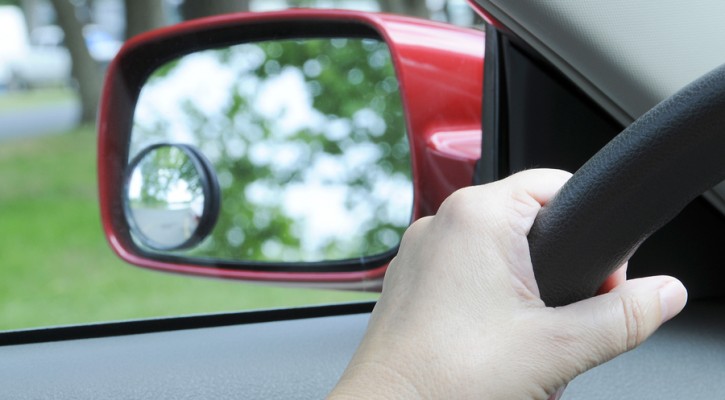
Use Your Mirrors
July 25, 2014
Mirrors. All cars and trucks come equipped with these low-tech, yet essential safety features. Unlike other higher-tech gadgets, these good old-fashioned reflections provide drivers with a constant, trustworthy source for predicting the future.
How can you use your mirrors to predict the future? All you have to do is look, really. By taking quick, occasional glances, drivers become more aware of their surroundings. And, situational awareness is they key to accurate predictions.
Check your mirrors periodically to maintain a mental 360-degree view of the highway. Note how many cars, trucks and motorcycles are surrounding you. Note how fast or slow they are going. Keep an eye out for speed-demons, distracted drivers and other erratic behavior. Look out for people weaving in and out of lanes. And, watch out for vehicles slowly creeping into your blind spot.
By keeping track of all these traffic nuances that surround you, you can better prepare for quick changes and easily predict emergency situations. You will know where those less-visible motorcycles and scooters are. You will know where the crazies are heading. And, you will know where you need to be in order to drive safely.
Never underestimate the importance of your mirrors. They are there for a reason, so use them and use them often.

